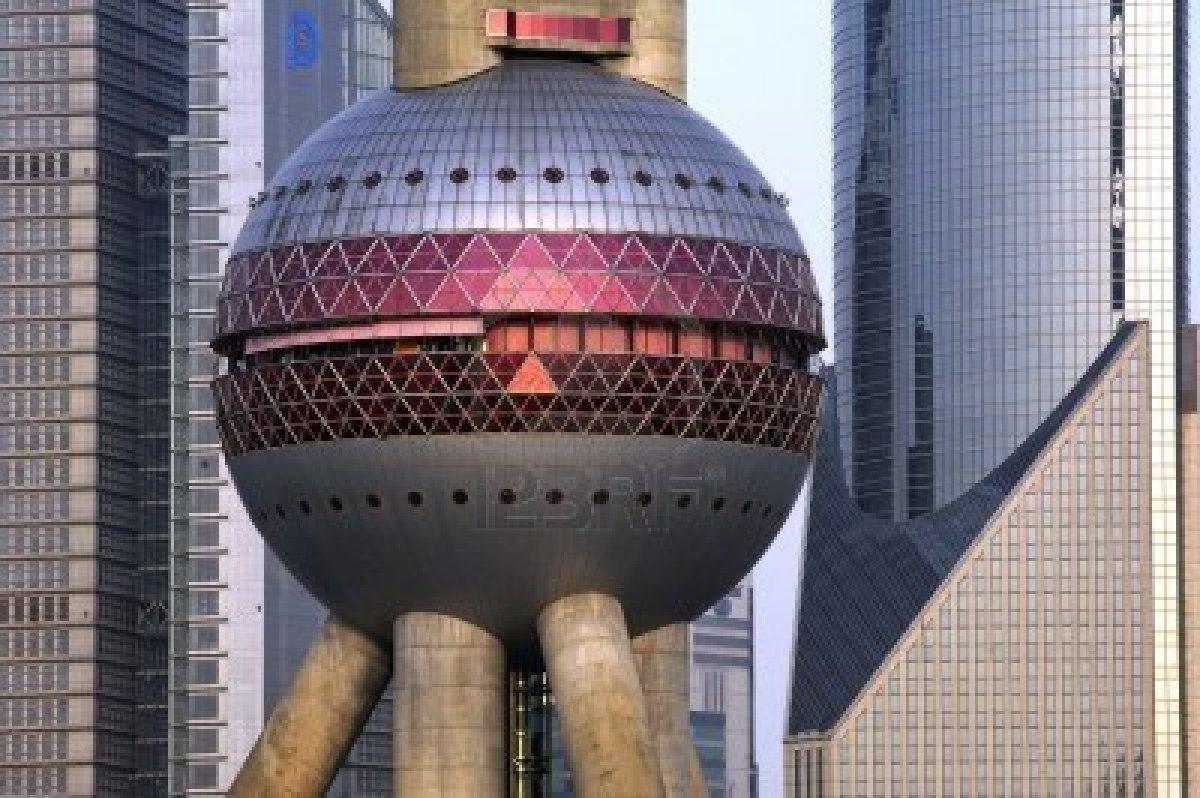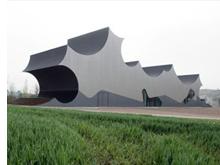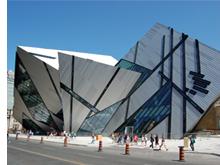Introduction
Technology simply refers to the purposeful application of scientific approaches in commercial or industrial objectives. The impact of technology on modern society cannot be overestimated. Many people view technology as a boon to society, considering the many benefits it has brought to the global population. The trend has served as a catalyst in the development of modern architecture and architectural designs, among other sectors of life. In the architectural sector, technology can be observed in the use of modern scientific information and approach in the design of next generation structures. Technology symbolizes advancement in the contemporary world, and this has been the case in the architectural industry which is characterized by dynamic changes in building structures and designs. The art of architecture was first conceived and expressed differently in various regions of the world, depending on the varied social and cultural definitions of those regions (Phaal, Farrukh & Probert 2004). Each cultural group would apply architectural designs that were completely different from those used by the other groups. For instance, the Roman architectural forms were different from either the Ancient Egyptian architecture or the Islamic architecture. This diversity of architectural designs portrayed a rosy picture and beauty that would later be improved greatly, following the emergence of technology and modernity. This paper examines the architectural history and theory from the 60s onwards, in regard with technological developments.
The Centrality of Technology in Architecture
The art and science of architecture has been in existence since prehistoric times, where numerous forms and shapes of building have been adopted through superior engineering. Of concern in this paper is the post modern architecture that had started in the 60s and which had faced a lot of criticism from different groups of people, due to its evolving nature that would be facilitated by the integration of technology into the sector. The significant transformation in the building sector was ignited by the famous Archigram concept which had dominated the architectural sector in the 1960s and 1970. The Archigram, which was initiated by a group of zealous architects from London would play a significant role in inspiring a technocratic future in architectural designs and structures. In this case, the mental perceptions of the previous age regarding architectural designs were replaced by attitudes that reflected the aspects of newly developed technologies in the sector. This was the beginning of the contemporary high-tech architecture that had replaced the traditional way of building, which had loomed over the world in the past. Architects all over the world would welcome the idea of postmodern architecture in two hands, for it offered them a blend of pre-modern elements and aspects that would enable them to make a significant progress towards the development of more eclectic styles (Davies 1988). The great revolution that was brought by postmodern architecture must have contributed immensely to the emergence of the contemporary architecture which has contributed to increased fashion designs in modern building approaches.
The centrality of technology in modern architectural systems is far beyond doubt, and the pressures are rapidly heightening with the adverse of modern technological systems. Ancient architects have always harbored the idea of taking architectural aspects into new horizons, but it was not until the emergence of modern technology when this long-awaited dream was finally realized. These advancements in technology had served as a driving force that would completely change the face of global architecture. Rich technology in almost all aspects of human life has transformed the imaginative ideas of architects into reality. Technological systems are highly applied by architects in the contemporary world, and this is clear from the impressive architectural structures that have emerged in various regions of our world today. Architectural practitioners across the world have almost taken the art of architecture to the next level by successfully coming up with awesome building structures, as it is seen in most urban regions and their surroundings. (Pisano & Teece 2007). Hong Kong and New York cities of The People’s Republic of China and the US respectively are real manifestations of how the developments in technology have changed the global architectural sector. The two cities are characterized by awesome skyscrapers and other high-rise buildings that have been built in a fusion of contemporary architecture and modern technological facilities. In fact, every decade that has passed since the 60s has revealed real innovation and development wonders that have enabled the current generation of humans to realize the glory of technology in building.
Following is a picture of the Oriental Pearl TV tower in Shanghai, symbolizing modern architecture and the use of innovation in architectural designs.

A good number of modern architectural firms are currently utilizing the latest developments in technology to design next generation building structures (Bertens 1994). Some good examples of structures that have clearly manifested the marvel of technology in architecture are Chicago Architectural Club in the United States, and the Rotating Towers in London and Dubai. These structures do utilize Green Technology, and are true evidence of how technological advancement has helped to bring significant changes in architectural designs and innovation. Other spectacular architectural structures that have fully used the magic of modern technology include London’s newest landmark, the Crystal, and the Cumulus building in Nordburg. Both the Crystal and the Cumulus are real life examples of how technology can be used to mould unimaginable and unique architectural structures and designs.
The following pictures show the Cumulus and the Crystal Architectural Wonders, located in Denmark and Britain, respectively.


The Cumulus, Nordburg Crystal, London
This stylish culture of modern architectural designs that have been tailored in modern technologies has spread to other fast developing regions of the world, and it is just what any other urban region would like to be associated with, in their attempt to stay ahead in development matters. Based on these observations, it is arguably clear that technology has to a greater extent become central to modern architectural practices and designs.
Recent Technologies Employed in Architecture
The world-wide development of architecture and architectural thinking incorporates a range of recent technologies. These technologies would range from the elements used in designing the plans, to the machines and materials used to erect the structures. For instance in matters regarding designing of structures, many architects have found great relief in using high-tech facilities to make their work much easier. Dramatic improvements have been realized in the modern architectural sector, owing to the progressive developments in modern era technology (Labatut 1997). The internet is one of the recent developments known to have triggered the biggest revolution in the global architectural sector. Through this worldwide revolution, architects have always found it easy to get access to important platforms on the World Wide Web, from where they could diversify their knowledge and skills through interaction with other architects from other parts of the world. More importantly, graphic and design softwares designed with architectural elements have been developed to help architects carry out their work with much ease.
Some of the most popular architectural softwares are Autodesk Revit and ArchiCAD, both of which are known to guarantee reliable pathways towards the experience of modern designing tools for architects (Ryder et al. 2002). The Computer-aided architectural design programs are reliable platforms when it comes to practical architecture. These programs can give three-dimensional designs for real images, thus granting the architects an advantageous position, when it comes to interactions with potential business clients. These programs have proved to be beneficial to both students and commercial architects since they guarantee full aid in architectural design. With these elements, architects from all over the world are able to design and modify their architectural designs as many times as possible, before they could apply them in real situations. These elements have also proved to be more beneficial to those architects specializing in the marketing of architectural designs. The constant use of modern building software coupled with other low-tech tools has largely improved the creativity of modern-day architects.
Apart from the computer drafting software, architects specializing in massive projects also apply sophisticated surveying tools and equipment in their work. In this regard, high-tech surveying tools that use high focus cameras with special zoom features are used to perform the tasks. These tools make it easy for the architectural surveyors to define the points on a large-scale land accurately, before they embark on the designing role. Accurate land measures are necessary before the layout of any structure begins, and in most cases, this goal cannot be reached upon by using conventional tools and equipment such as tapes and chains (Henderson & Clark 1990). This task has been made easier through the use of electronic surveying equipment and tools that are supported into place by elevating tripods. Most of these devices have data processing features which enables them to transmit the dimensions and coordinates of various units of measurement. More importantly, some of these devices are also made into LCD panels or Screens, from where the readings can be displayed. Equipments such as Tellurometers can measure distances of up to hundred kilometers, and this makes them one of the most reliable tools when it comes to large-scale surveying.
Below are examples of some the common Surveying tools used by Modern Architects.


Automatic Levels Theodolites
Other recent forms of technologies applied in the development of architecture can be observed in the building processes, where high-tech equipment and facilities are used to make work easier for the workers. Assistive technology is common in many regions today as a result of advanced technological systems. Many high-tech buildings are built in the fusion of steel and glass, and would require special building equipment as well as great architectural ability or expertise (Deborah 2012). This need has necessitated the development of advanced building equipment to ease the work, and to accord the structures a grand finishing that befits modernity as it can be manifested through the high-tech building generation. Modern architects use a wide range of high-tech machinery and electronically operated equipment to do tasks that were initially performed by man. However, whereby a range of recent technologies have been employed in modern architecture, as it is shown above, it is also clear that significant technologies that would have aided in further developments in the sector have been ignored. For instance, architects have failed to adopt technologies that would help preserve the history, culture, and heritage of the previous age or generations in building structures.
The Need for Innovation in Architecture
Innovation is the process of coming up with new ideas or strategies towards the development of a particular project. Innovation is necessary in modern architecture, since it helps in the development of new designs and forms in the sector. Even though architecture is one of those sectors that have been through massive development as a result of modern technological advancements, there is still room for innovative refining in the sector. As it would be observed, there is need for improvements in different architectural approaches and designs. It has taken eternity for modern architects to come up with the most impressive structures of the day, as it is evident in many urban centers. This magnificent development in architecture would be realized out of the burning desire of strong-willed people who wanted to see transformations in the sector (Frampton & Futagawa 1985). This dream was finally realized after many days of creative imagination, and would be taken through many innovation phases before the current high-tech architectural structures, thanks to modern advancements in technology. However, these structures may be awesome and impressive to the eye, but this is not enough to make them complete with every aspect that makes human life easy and more comfortable. In that regard, modern architects and architectural designers should try to come up with new methods and ideas that would help in taking architecture to the next level of development.
Things in the contemporary world are changing with times, and so are aspects of architectural designs and structures. With the passing of time, older buildings are bound to become old-fashioned even to the extent of getting demolished, in order to yield way for new structures that do match the qualifications and demands of modern housing facilities (Guy & Farmer 2001). In this regard, there is need to improve the existing architectural designs through technical innovation, to create outstanding development dimensions in the sector. More importantly, innovation is also necessary in the sector to help in the reconfiguration of existing components in a new style. Different architectural technologies are required to match the heightening pressures posed by current international issues such as the global warming, which continues to pose great risks to humans and the global ecosystems. As a matter of fact, the progressive issue of Global warming has brought many deadly effects to global populations, and in that case, there is a need for architects to develop structures that are affinity to nature and the current weather patterns (Kerr 2007). In other words, the architects should try to modify modern architectural processes and facilities to match the various weather patterns observed in different regions of the world.
Innovation is also necessary in modern architecture to enable people make maximum use of natural resources, instead of having to rely much on artificial resources whose implementation has proved to be more costly and time consuming (Porter et al. 2002). This transformative process can be realized through full integration of the concept of green technology into modern architectural systems. Green technology has proved to be eco-friendly in all aspects, thus successfully emphasizing minimal exploitation of our natural resources. By effectively incorporating green technology into architectural processes and systems, humans can efficiently make use of natural resources in their surroundings. For instance, people in sustainable environments should adopt buildings styles that would enable them make full use of solar and wind energies, among other natural resources. Players in the architectural industry should try to incorporate the invisible magic of new and advanced technologies in their development works, in order to realize the full potential of their imagination and creativity in architectural designs. With these few considerations, the many developments in the architectural sector would be transformed into a real success.
Conclusion
As it is clearly manifested in this paper, technology has become a common trend in every aspect of contemporary architecture. With the advance in technology, modern architects have found great relief since they are able to integrate ICT strategies into their work. This has not only made their work easier, but more enjoyable. The application of Information Technology in architectural works has brought visibility into modern building infrastructures all over the world. As it has been observed from this paper the centrality of technology in architecture is beyond doubt, and this clearly explains the impact of the modern trend of life in the sector. Based on the arguments expressed in this paper, it is also apparent that a wide range of recent technologies have been employed to bring light into the global architectural industry. The paper has also expressed the need for innovation in architecture, and the various ways by which this has been achieved over the years.
List of References
Bertens, H 1994, The idea of the postmodern: A history, Routledge, New York.
Davies, C 1988, High Tech Architecture, Thames and Hudson, United Kingdom.
Deborah, G 2012, The social construction of technological systems: New directions in the sociology and history of technology, MIT Press, Masachusetts.
Frampton, K. & Futagawa, Y 1985, Modern architecture, Thames and Hudson, United Kingdom.
Guy, S. & Farmer, G 2001, ‘Reinterpreting sustainable architecture: the place of technology’, Journal of Architectural Education, vol. 54 no. 3, pp. 140-148.
Henderson, R. & Clark, K 1990, ‘Architectural innovation: The reconfiguration of existing product technologies and the failure of established firms’, Administrative Science Quarterly, vol. 17 no. 11, pp. 9-30.
Kerr, R 2007, ‘Global warming is changing the world’, Science, vol. 316 no. 58, pp. 188-190.
Labatut, J 1997, ‘An Approach to Architectural Composition’, Journal of Architectural Education, vol. 11 no. 2, pp. 33-37.
Phaal, R., Farrukh, C., & Probert, D 2004, ‘Technology roadmapping—A planning framework for evolution and revolution’, Technological Forecasting and Social Change, vol. 71 no. 1, pp. 5-26.
Pisano, G. & Teece, D 2007, ‘How to capture value from innovation: Shaping intellectual property and industry architecture’, California Management Review, vol. 50 no. 1, pp. 278-296.
Porter, W., Scott, A., Intrachooto, S. & others 2002, Technological innovation in architecture: effective practices for energy efficient implementation, Massachusetts Institute of Technology, MA, USA.
Ryder, G.,Ion, B., Green, G., Harrison, D. & Wood, B 2002, ‘Rapid design and manufacture tools in architecture’, Automation in Construction, vol. 11 no. 3, pp. 279-290.